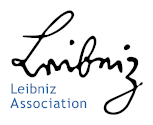- The Institute
- Research
- Dictatorships in the 20th Century
- Democracies and their Historical Self-Perceptions
- Transformations in Most Recent History
- International and Transnational Relations
- Edited Source Collections
- Dissertation Projects
- Completed Projects
- Dokumentation Obersalzberg
- Center for Holocaust Studies
- Berlin Center for Cold War Studies
- Publications
- Vierteljahrshefte
- The Archives
- Library
- Center for Holocaust Studies
- News
- Dates
- Press
- Recent Publications
- News from the Institute
- Topics
- Munich 1972
- Confronting Decline
- Feminist, Pacifist, Provocateur
- Der Mauerbau als Audiowalk
- Digital Contemporary History
- Transportation in Germany
- Envisaged Futures at the End of the Cold War
- From the Reichsbank to the Bundesbank
- German Federal Chancellery
- History of Sustainabilities: Discourses and Practices since the 1970s
- Changing Work
- Democratic Culture and the Nazi Past
- The History of the Treuhandanstalt
- Foreign Policy Documentation (AAPD)
- Dokumentation Obersalzberg
- Hitler, Mein Kampf. A Critical Edition
- "Man hört, man spricht"
- Dictatorships in the 20th Century
- Democracies and their Historical Self-Perceptions
- Transformations in Most Recent History
- International and Transnational Relations
- Edited Source Collections
- Dissertation Projects
- Completed Projects
- Dokumentation Obersalzberg
- Center for Holocaust Studies
- Berlin Center for Cold War Studies
Urban Authenticity: Civic Engagement and Urban Planning in Nuremberg
Projektinhalt:
The project “Urban Authenticity: Civic Engagement and Urban Planning in Nuremberg” is part of the joint research project “Urban Authenticity: Creating, Contesting, and Visualizing the Built Heritage in European Cities since the 1970s”, carried out by the Leibniz-Institute for Research on Society and Space, the Leibniz-Center for Contemporary History Potsdam, the Herder Institute for Historical Research on East Central Europe, and the Leibniz-Institute for Contemporary History Munich-Berlin (IfZ), in cooperation with the Association of Museums of Brandenburg.
The project explores the question of how the local built heritage is negotiated in European cities and what significance is granted to the concept of urban “authenticity”. The study centers on public debates, the medial presentations and practices of citizen initiatives, city administrations, and other actors at the intersection of building policy, tourism, and migration. Debates over an “authentic” built heritage are investigated using the example of four case studies involving Nuremberg in western Germany, Potsdam in eastern Germany, Szczecin, Poland, and Marseille, France. Particular interest is placed here on visual sources, looking into the significance of visual memory in connection with the authentication of built heritage.
The subproject on Nuremberg is conducted at IfZ, and will center on the urban public debates over the maintenance or reconstruction of the medieval built heritage, urban planning in the 1970s and 1980s, and the treatment of the former Nazi party rally grounds (Reichsparteitagsgelände). A particular focus will be placed on civil society groups and associations such as the Nuremberg Altstadtfreunde (“Friends of the Old Town”). Within the context of the national and international discourse on urban planning and the reconstruction of urban heritage, the project will historicize the political, social, and cultural context as well as local conditions regarding authenticity claims, delving into the question of how local built heritage is “authenticated” in public discourse, the media, and urban planning.





